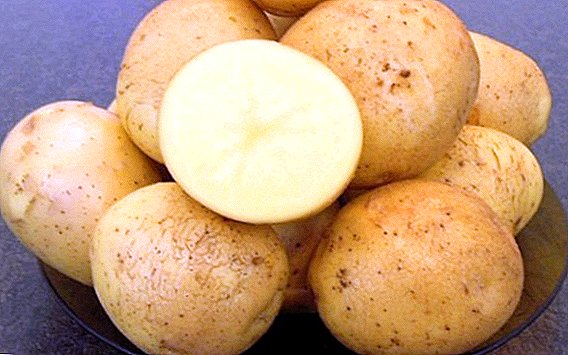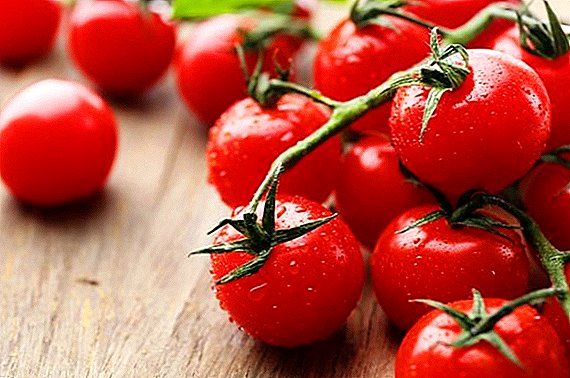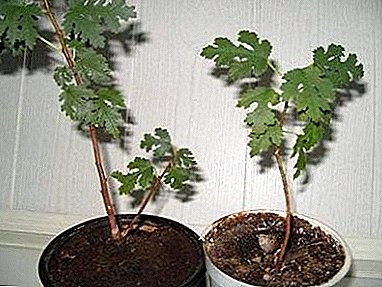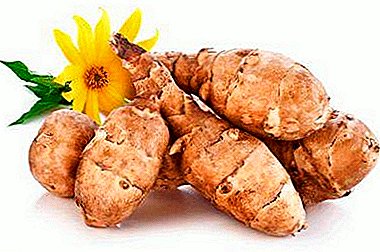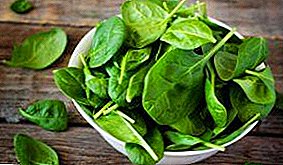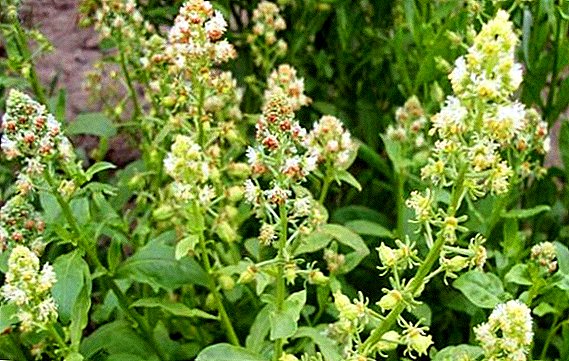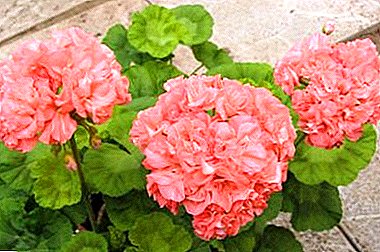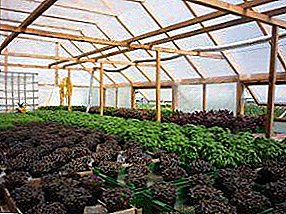
Connoisseurs of healthy and delicious spicy herbs pay special attention to basil. This plant with a delicate recognizable taste and rich aroma is indispensable in Georgian, Armenian, Turkish, Italian and French cuisine.
Today, the basil greens are actively used by the Russians, adding it to salads, soups, side dishes for meat and fish. Gentle leaves give the dishes a delicate spicy taste, besides they contain a whole complex of useful vitamins and microelements.
The advantages of the greenhouse
Basil is successfully growing in open beds and in pots. But planting in the greenhouse has a number of advantageswhich should be considered novice gardener.
- Basil grows in greenhouses quickly, it is protected from temperature extremes and pests.
- Heated designs allow you to harvest in late autumn, winter and early spring, when vitamins are particularly needed.
- Basil good transfers neighborhood with other spicy herbs and vegetables. It can be planted in a greenhouse with tomatoes, eggplants and other crops.
- Growing basil in the greenhouse will not only provide the family with greenery, but also provide an opportunity to earn by selling surplus.
- For growing, you can use both heated greenhouses and light summer greenhouses without additional heating.
Variety selection
 Botanists contain at least 150 varieties of basil. They differ in the size of the bush, the color of the leaves, the nuances of taste and aroma.
Botanists contain at least 150 varieties of basil. They differ in the size of the bush, the color of the leaves, the nuances of taste and aroma.
Novice gardener fit the most popular and undemanding varieties. In the greenhouse, you can land several options at once or focus on the most beloved ones.
- Basil scented or camphor. The most popular variety with bright green leaves. It has a recognizable clove aroma, it is well bushy. The variety is especially popular in Mediterranean cuisine.
- Basil cinnamon or mexican. There are subtle cinnamon nuances in taste. The plant is compact, beautifully combining pale green leaves with bright purple flowers.
- Basil Violet. It is very popular in the Caucasian cuisine, it is added to the side dishes for meat, sauces and even desserts. The taste of the leaves is very delicate, slightly sweet.
- Basil citric. Spreading plant, giving a great green mass. The leaves are large, light green, with a subtle lemon flavor.
Useful video about varieties of basil grown in the greenhouse:
What greenhouse is needed?
Basil can be grown in greenhouses and heated greenhouses. Thus, when grown in a greenhouse in winter, basil can be combined with other crops: leaf and head lettuce, dill, parsley, spring onions. These crops have similar requirements for soil composition, irrigation, and temperature conditions.
Suitable and small greenhouse adjacent to the building. In such structures, one wall becomes deaf, which increases the temperature inside the structure and allows you to save on heating. How to organize photosynthesis in the greenhouse, find out on our website.
Winter greenhouse can be covered with glass or polycarbonate sheets. A more economical option - double plastic film. Her the only drawback is fragility. The film coating will have to be changed annually, moreover, in regions with too cold climates, such protection may not be sufficient.
In winter, maintain the desired temperature in the greenhouse. will help biofuels - mix of rotted manure with straw. The mass is left under the plastic film for several days, and then laid out on the ridges and covered with a thick layer of prepared soil.
 Along the perimeter of the greenhouse, it is recommended to lay out sheets of ruberoid that will help protect plants from the cold.
Along the perimeter of the greenhouse, it is recommended to lay out sheets of ruberoid that will help protect plants from the cold.
For heating greenhouses use electric boilers, heaters, stoves or small fires.
Heating is necessary with the onset of frost. For airing need vents. To prevent cold air from entering the greenhouse, at the entrance is a small vestibule.
Soil preparation
Basil is picky about soil composition. In a greenhouse, it is better to remove the top layer of soil, filling the ridges with a mixture of garden soil, peat and sand. The soil should be light and loose., with moderate acidity. Before planting, rotten manure is introduced into the ground (at the rate of 4 kg per 1 sq. M). 2 weeks after planting, the soil should be fertilized with an aqueous solution of chicken manure or urea.
In a greenhouse, basil can be grown from seedlings or seeds. The first method significantly reduces the growing season. Seeds on seedlings are sown in boxesfilled with light ground. Deepen them do not need. The boxes are covered with plastic wrap.
The first shoots appear after 2 weeks. When the plants get 2 leaves, a pick is done. Between young plants remains a distance of 5 cm, this will allow them to develop normally. After a month and a half seedlings can be transplanted to the greenhouse. It is better to sow basil in winter, planting seedlings in early spring.
Features of planting and care
How to grow basil in a greenhouse? The seedlings are planted in shallow furrows, the distance between the plants is about 15 cm. Every 7 days, the beds should be watered abundantly with not too cold water.
Basil loves warmth. The optimum temperature for growth is 22 ° C ... 28 ° C. Excessive heat plants are not needed, in the warm season, the greenhouse needs to be aired often. In the cold basil must be protected from drafts. When the temperature drops to 15 ° C, growth slows down, cooling down to 5 ° C can destroy sprouts.
The first harvest can be harvested when young plants reach 20 cm. Stalks cut with shears or a sharp knife so that on the surface of the earth remained a stump with 2 leaves. You need to act carefully, the root system of the basil is weak, with a sharp movement you can accidentally pull out a bush.
 After harvesting the plants need to be watered well and apply fertilizer to the ridges: chicken dung or urea water solution. Such a system will ensure the uninterrupted growth of fresh greens; harvest will be possible at least once a week. For the season from 1 square. m closed ground can collect from 2 to 7 kg of green.
After harvesting the plants need to be watered well and apply fertilizer to the ridges: chicken dung or urea water solution. Such a system will ensure the uninterrupted growth of fresh greens; harvest will be possible at least once a week. For the season from 1 square. m closed ground can collect from 2 to 7 kg of green.
Basil undemanding to care and happy good harvest. This culture will suit even novice gardeners. Having gained useful experience, you can start growing other, more capricious plants.


